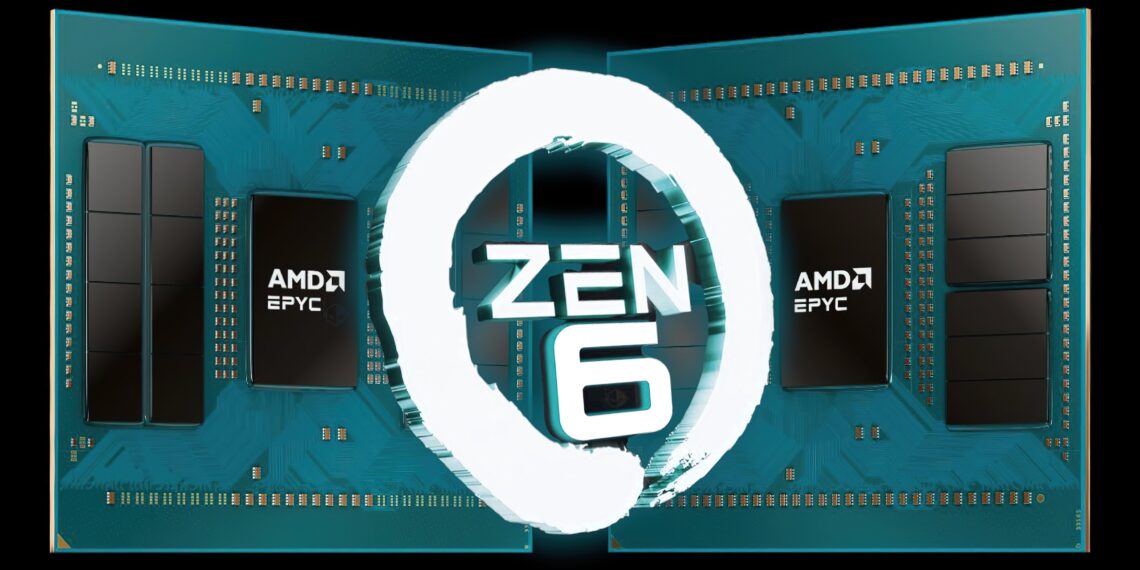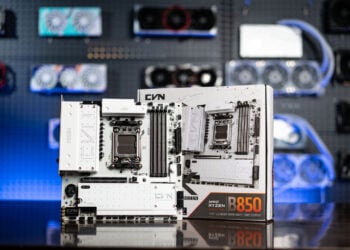AMD Zen 6 EPYC Venice, the server CPU wars are about to reach a fever pitch. AMD has just dropped a bombshell announcement that’s sending shockwaves through the data center world: the company is gearing up to unleash its most powerful processors yet, featuring an unprecedented 256 cores in a single package.
Table of Contents

AMD Zen 6 : The Game-Changing EPYC Venice Lineup
Picture this: a single CPU with 256 cores and 512 threads, built on cutting-edge 2nm technology. That’s not science fiction anymore—it’s AMD’s EPYC Venice reality, scheduled to transform data centers in 2026.
During AMD’s recent Advancing AI keynote, the company pulled back the curtain on its ambitious roadmap, revealing details that left even seasoned tech veterans speechless. The EPYC Venice processors, powered by the revolutionary Zen 6 architecture, represent a quantum leap in computing power that could redefine what’s possible in enterprise computing.
What Makes Zen 6 So Special?
The numbers speak for themselves, but the story behind them is even more compelling. AMD’s engineers have been working tirelessly to push the boundaries of what silicon can achieve, and Zen 6 is the culmination of that effort.
Core Count Comparison:
- EPYC Venice (Zen 6C): 256 cores, 512 threads
- Current EPYC Turin (Zen 5C): 192 cores, 384 threads
- EPYC Venice (Standard Zen 6): 96 cores, 192 threads
That’s a staggering 33% increase in core count over the current generation, packed into processors that will deliver up to 70% better performance generation-over-generation.
The Technical Marvel Behind the Magic
Here’s where things get really interesting. AMD isn’t just throwing more cores at the problem—they’re completely reimagining the architecture from the ground up.
The EPYC Venice processors will feature:
Revolutionary Memory Architecture: Up to 1.6 TB/s of memory bandwidth with 16-channel DDR5 support on the high-end SP7 platform. To put that in perspective, that’s enough bandwidth to stream 4K video to over 300,000 viewers simultaneously.
Next-Generation Connectivity: Double the CPU-to-GPU bandwidth compared to current generations, enabling seamless integration with AMD’s upcoming Instinct MI400 accelerators.
Advanced Process Technology: Built on TSMC’s industry-leading 2nm process node, these chips will deliver unprecedented performance per watt.
Two Flavors, Endless Possibilities
AMD understands that one size doesn’t fit all in the server world. That’s why EPYC Venice comes in two distinct variants:
Standard Zen 6 (SP7 Platform): The premium option with up to 96 cores, designed for applications that demand maximum single-thread performance alongside exceptional multi-threading capabilities.
Zen 6C Dense Variant (SP8 Platform): The core-count champion with up to 256 cores, optimized for workloads that can benefit from massive parallelization.
This dual-approach strategy allows AMD to capture both the high-performance computing market and the cloud-scale deployment segment with surgical precision.

The 2027 Vision: EPYC Verano and Beyond
But AMD isn’t stopping at Venice. The company has already begun teasing its 2027 roadmap, featuring the mysterious EPYC Verano processors that will likely be powered by Zen 7 architecture.
While details remain scarce, industry insiders suggest that Verano could push core counts even higher while introducing revolutionary features we can barely imagine today. Paired with the upcoming Instinct MI500 GPU accelerators, these systems promise to deliver “disruptive” performance improvements.
The AI Arms Race Intensifies
This rapid cadence isn’t happening in a vacuum. AMD is clearly responding to NVIDIA’s aggressive release schedule, adopting an annual update cycle that ensures data center customers always have access to the latest and greatest technology.
The implications are staggering:
- 2026: EPYC Venice with Zen 6 (up to 256 cores)
- 2027: EPYC Verano with Zen 7 (specifications TBD)
- Ongoing: Annual updates keeping pace with AI demands
What This Means for the Industry
The announcement of 256-core processors isn’t just about bigger numbers—it’s about fundamentally changing what’s possible in computing.
For Cloud Providers: More cores mean higher VM density, better resource utilization, and ultimately, lower costs per customer workload.
For AI Researchers: The massive parallel processing power opens doors to training larger models and running more complex simulations than ever before.
For Enterprise Users: Applications that once required entire server farms could potentially run on a single socket, dramatically simplifying infrastructure.
The Competitive Landscape
Intel, once the undisputed king of server processors, now finds itself in an increasingly challenging position. AMD’s relentless innovation and aggressive roadmap leave little room for complacency in the data center space.
With each generation, AMD is not just catching up—it’s pulling ahead in metrics that matter most to enterprise customers: performance, efficiency, and total cost of ownership.
The Technology Behind the Transformation
Understanding the engineering marvel that makes 256 cores possible requires diving into the technical details that separate AMD’s approach from the competition.
Chiplet Architecture Evolution: AMD’s proven chiplet design continues to pay dividends, allowing the company to mix and match different core types and optimize for specific workloads.
Power Efficiency Breakthrough: Despite the massive increase in core count, AMD is targeting similar power envelopes to current generations, showcasing remarkable efficiency improvements.
Manufacturing Partnership: The collaboration with TSMC on 2nm technology ensures AMD has access to the most advanced silicon fabrication techniques available.
Looking Ahead: The Data Center Revolution
As we stand on the brink of 2026, it’s clear that AMD’s EPYC Venice processors will usher in a new era of computing. The combination of 256 cores, advanced memory architecture, and cutting-edge manufacturing technology creates a perfect storm of performance capabilities.
For organizations planning their next-generation infrastructure, the message is clear: the future of computing is arriving faster than anyone anticipated, and it’s going to be more powerful than we ever imagined.
The race to 256 cores isn’t just about bragging rights—it’s about enabling the next generation of applications, from artificial intelligence to scientific computing, that will define how we work, live, and understand our world.
Ready or not, the 256-core future is coming in 2026.








